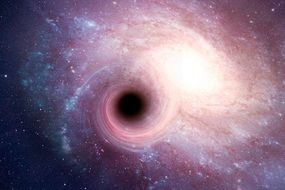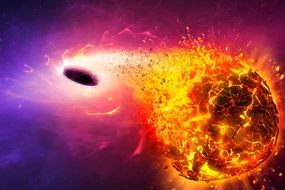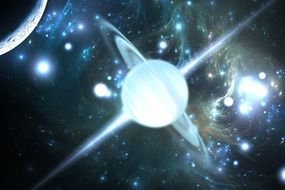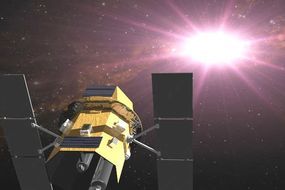Space discovery: Astronomers warn of colossal galaxy explosion heading towards Earth – Express.co.uk
HUMANITY could witness a mass explosion at the centre of the galaxy from a bubble-blowing supermassive black hole.
Early humans may have witnessed such an explosion over 3.5 million years ago – and it could happen again very soon according to researchers. Scientists call the cosmic gas orbs the Fermi bubbles and even though they’re a few million years old there is a mystery as to how the bubbles first formed. Researchers from the University of Sydney reconstructed a plausible explanation for the bubbles birth, putting it down to a gigantic explosion.
The Fermi bubbles were created by an epic flare of hot nuclear energy that shot out the galaxy’s poles roughly 3.5 million years ago.
A beam from the explosion shot into space for hundreds of thousands of light-years.
Lead study author Joss Bland-Hawthorn told Live Science, the effect would have shone out of the galaxy’s centre for 300,000 years.
Mr Bland-Hawthorn also noted that a similar explosion or flare could have occurred 10 million years ago and could well be heading towards Earth.
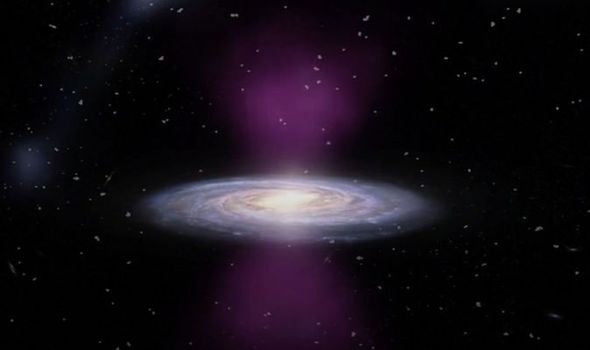
The blackhole is in the centre of the universe (Image: James Josephides/ASTRO 3D)
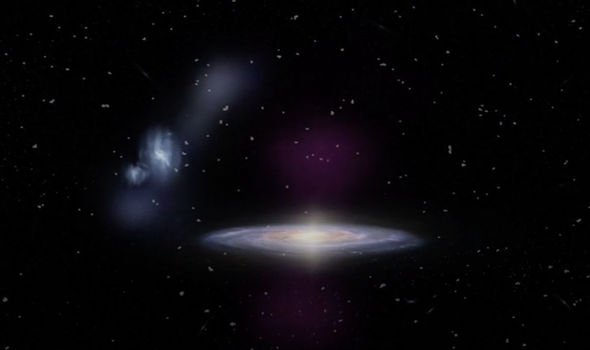
A beam from the explosion shot into space (Image: James Josephides/ Astro 3D )
He said: “It’s plausible that one explosion took place 10 million years ago, and the jet is now arriving in our direction.”
Speaking on the flare, the director of the Sydney Institute for Astronomy and his team calculated the blast may have been visible to early humans.
He said: “It’s an amazing thought that, when cave people walked the Earth, if they’d looked off in the direction of the galactic centre, they’d have seen some kind of giant ball of heated gas.”
JUST IN: Building blocks of DNA could have been present in gas clouds in space
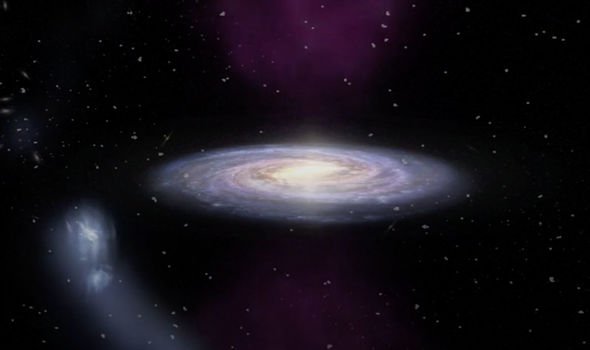
The Fermi bubbles were created by an epic flare of hot nuclear energy (Image: James Josephides/ASTRO 3D)
Researchers looked to the Hubble Space Telescope of the Magellanic Stream to date the explosion.
The Magellanic stream is a 600,000-light-year-wide arc of gas trailing behind two dwarf galaxies that orbit the Milky Way.
From the Earth, the Magellanic Stream spreads across half of the night sky as it surges through space some 200,000 light-years away.
It is still close enough for neighbouring galaxies to feel the heat of particularly violent eruptions from our galaxy’s central black hole, according to the researchers.
DON’T MISS
Asteroid warning: From boiling alive to ruptured ears – strike horror (NEWS)
Who do we blame for climate change? Expert says blame ‘big companies’ (NEWS)
Jet suit breakthrough: ‘Buck’ Rogers in the 21st Century (NEWS)
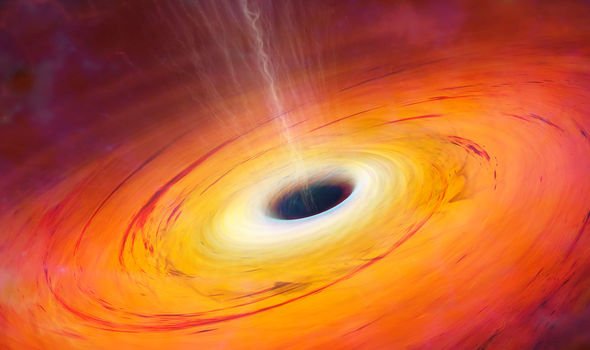
The Magellianic Spread spreads across half of the night sky (Image: Getty Images)
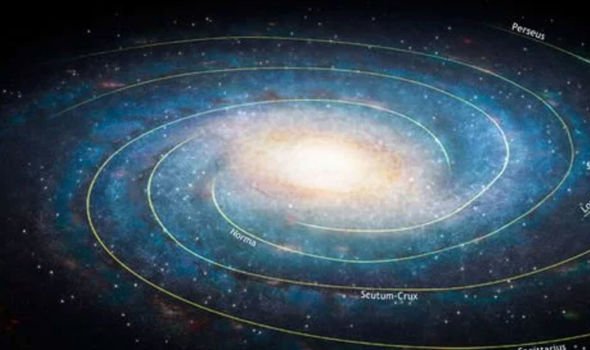
All galaxies have super blackholes at their core (Image: Getty Images)
While most of the hydrogen gas makes up the Magellanic Stream is very cold, recent Hubble observations have revealed at least three large regions where the gas is unusually hot.
Those regions, incidentally, align with the north and south poles of the Milky Way’s galactic centre.
According to Mr Bland-Hawthorn, that’s a clear sign that those hot regions were toasted by an enormous flare-up of charged particles beaming out of our galaxy and into deep space.
He said: “This can only be done radiatively from the monster at the galaxy’s nucleus.”
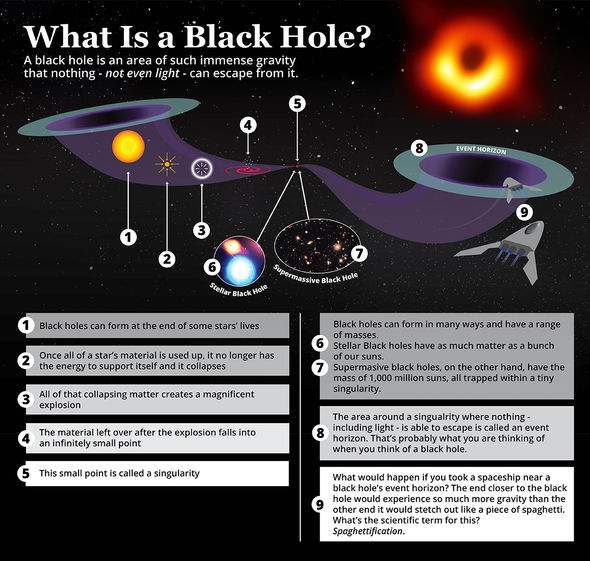
What is a black hole? (Image: Daily Express)
The scientist and his colleagues showed how such an explosion of energy, known as a Seyfert flare, could blast out of the centre and reach all the way to the hottest regions of the Magellanic stream.
The team calculated the explosion must have occurred between 2.5 and 4.5million years ago – a time when humanity’s early ancestors were already walking the Earth.
While early humans may have seen the mysterious flare overhead, Mr Bland-Hawthorn believes it is unlikely they were impacted by its energy due to the earth’s protective atmosphere.
e added how it was good news for humanity as research suggests more Seyflert flares could be on their way.
The scientist stated that flares can get trapped in the immediate vicinity of the back holes that made them for millions of years.
He added: “But I think the most powerful bursts from our Sun would be about the same power — so, bad for satellites and space walkers, but our atmosphere protects life pretty well.”
